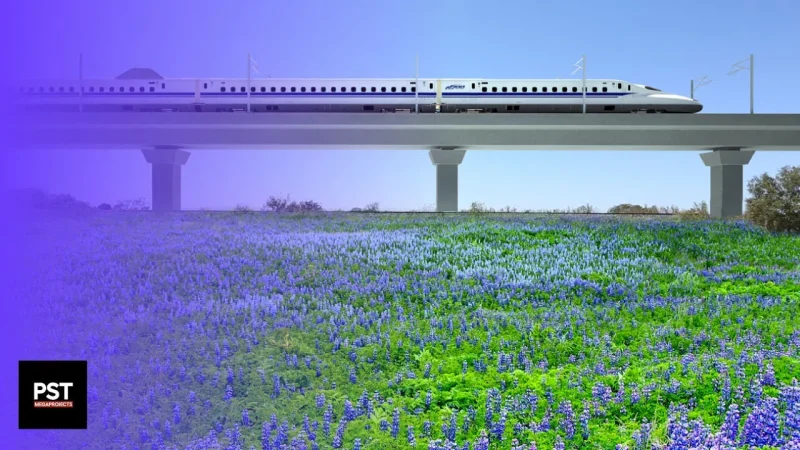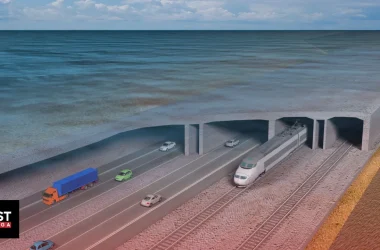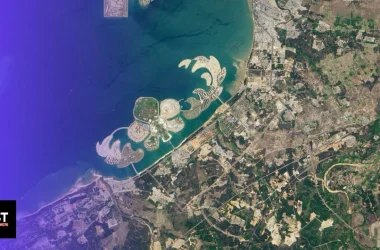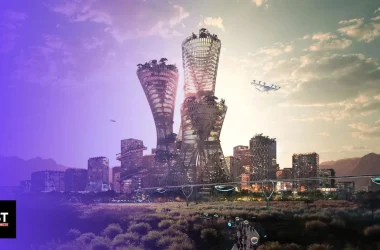Vast in scope and ambitious in design, high-speed rail is transforming transportation on a global scale. As economic lifelines connecting communities across vast distances, railroads remain one of the most cost-effective means of moving people and goods between nations.
Recognizing rail’s strategic importance, governments worldwide dedicate untold billions annually to developing, expanding, and envisioning all-new iron networks.
Here are three massive, billion-dollar railway engineering marvels rising simultaneously across three continents.
Dallas-Houston Railway
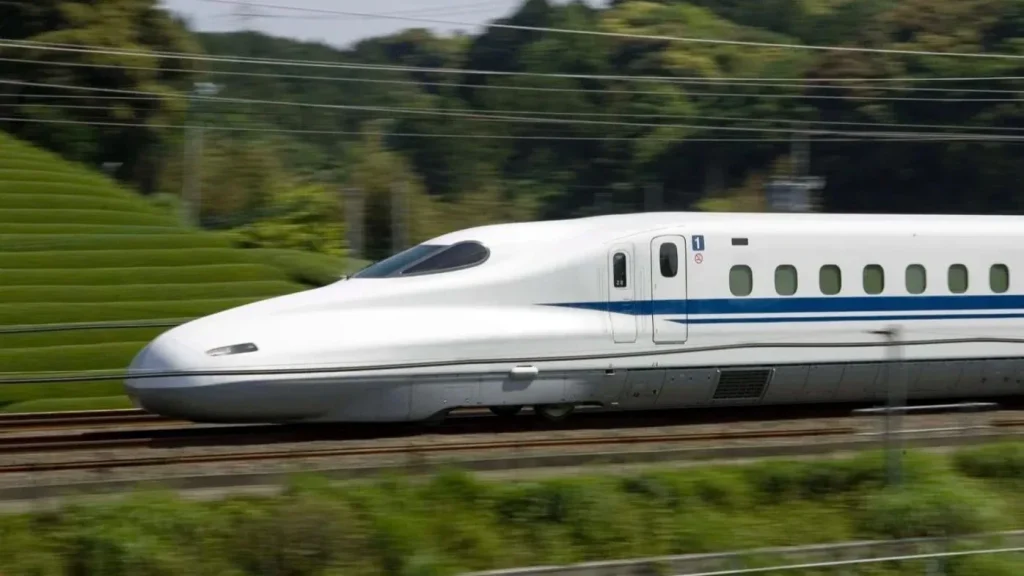
For the first high-speed rail project, we have the Dallas-Houston railway, which is estimated to cost a total of $30 billion.
The idea for this high-speed rail project was hatched a decade ago, when a Dallas-based company called Texas Central suggested building a 240-mile, or 386.2-kilometer, railway that could transport passengers between Texas’s two largest cities in a matter of less than 90 minutes, greatly reducing the four-hour journey.
The trains will be built using cutting-edge Shinkansen technology from Japan, allowing a bullet train to achieve high speed, safety, and comfort. Its focus on safety is emphasized by the fact that all trains will be powered via overhead catenary cables, with an advanced regenerative braking system that conserves and converts kinetic energy into electric power to slow the train.
It will also have convenient departures every 30 minutes during peak periods each day and every hour during off-peak periods, with 6 hours reserved each night for system maintenance and inspection.
The high-speed rail trains will operate at speeds in excess of 200 miles per hour, or 321.8 kilometers per hour, and will include wide seats separated by an aisle, ensuring sufficient leg, head, and elbow room.
It will also include quiet, work-friendly cabins and food and beverage options that fit every need and budget. Of course, to use the work-friendly cabins, you have to have WiFi, which will be provided in the trains, in addition to multiple power outlets.
Additionally, the railway plans to offer fares that are highly competitive with the cost of travel by car or commercial air service. Passengers will be able to do everything related to their trips online or via apps, from reviewing schedules and purchasing tickets to ordering onboard food.
The stations servicing the train will be called North Texas Station, Brazos Valley Station, and Houston Station. They will be located with easy access to major roadways in the state and other public transit options. They will also include plenty of on-site parking, for people who are driving to the station before their trips.
Aside from that, the stations will include a variety of retail stores, restaurants, and shops, each with a distinctly Texas style of service provided by well-trained staff.
Why is Texas Building it?
It is being built to solve a critical problem in Texas’s transportation network: the traffic caused by Texans commuting from the two cities. We mentioned earlier that it’s a four-hour journey, but it’s expected to increase to six hours by 2040 as the state’s traffic worsens.
Nearly 100,000 Texans travel back and forth between Houston and Dallas/Fort Worth more than once a week, and many others make the trip very regularly. So, a high-speed train would substantially benefit the state and increase the efficiency of its transportation system.
This will also benefit the environment, as the project is expected to lead to the removal of 12,500 cars per day on the route from Houston to Dallas, reducing greenhouse gas emissions by more than 100,000 tons per year.
Opposition
Despite this, the Dallas-Houston high-speed rail was heavily criticized by the people it was supposed to serve.
In fact, many Texans were enraged at the fact that the project needed to acquire property from private property owners for its construction, and ranchers living along the route challenged the attempts made by the companies behind the project to survey and construct the line.
Texas Central struggled with lawsuits over the megaproject since 2016. But, in 2022, the Supreme Court of Texas ruled that Texas Central has eminent domain authority on land that is needed to build the rail line.
This allowed the project to be revived after delays caused by the lawsuits, which have also skyrocketed its costs from $12 billion to $13 billion. This railway is expected to be completed by 2030.
Suburban Rail Loop
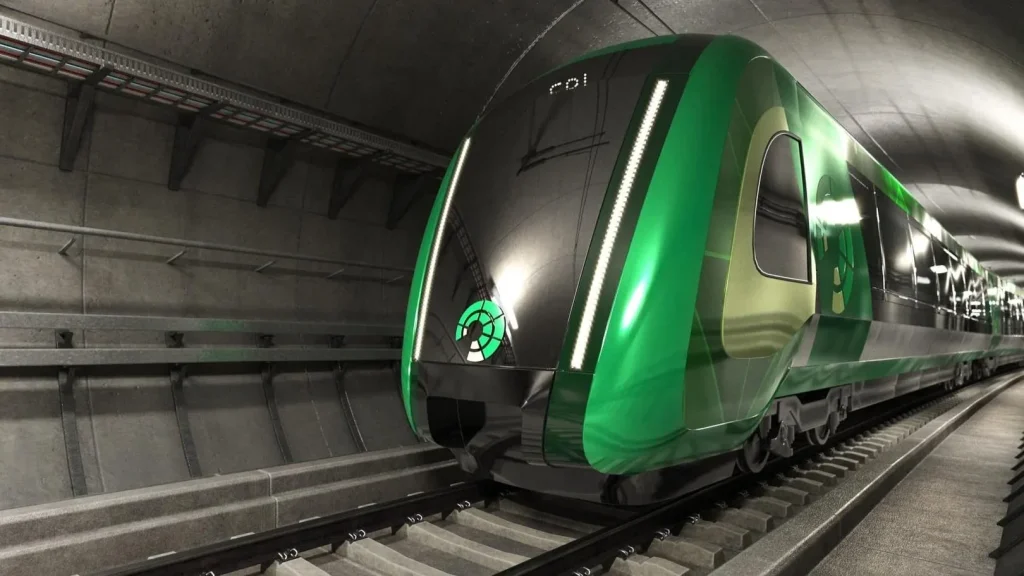
The second railway project, we have Australia’s Suburban Rail Loop, which could cost up to $58 billion. In fact, the first stage alone is expected to cost $34.5 billion.
This project was first announced in 2021 as more than a transport project; it was a brand-new vision for the Australian city of Melbourne. It will stretch across 90 kilometers, or around 56 miles, underneath the Melbourne suburbs, connecting to other major transport hubs such as the Melbourne airport.
It’ll include 15 new stations in four distinct sections, with the first one, the SRL East Line, currently under construction. The SRL East Line is focused on the six areas of Cheltenham, Clayton, Monash, Glen Waverley, Burwood, and Box Hill.
Like the Dallas-Houston railway, it will be powered by overhead catenary cables to ensure safety, but it’ll be much slower. In fact, it’s expected to run at a speed of 62 miles per hour, or 100 kilometers per hour.
Why is Australia Building it?
The main reason this railway is being built is that the areas it will cover are expected to see surges in their populations in the future. For instance, Cheltenham’s population was forecast to double from 20,500 in 2018 to 52,500 in 2056, while Box Hill’s population would almost triple to 77,000.
Aside from this, it’s expected to reduce travel times, with fast journeys of 3 to 4 minutes between stations. It will also ease traffic congestion and benefit the environment by taking around 600,000 car trips off the roads every day.
Also, the SRL East Line alone will create up to 8,000 direct jobs, and it’ll also create a Graduate Program to help graduates prepare for the job market and learn from industry experts across a diverse range of fields over the course of 2 years.
It’s also expected to generate major investment and business activity around the new stations, transforming Melbourne into a city of multiple employment centers.
Opposition
People who opposed the railway project called it the government’s plan to “pack people into five suburbs,” as the government created the project with the plans of growing the population of the cities it will cover in mind.
It was also criticized for its massive costs, which were seen as tone-deaf, especially since the megaproject was announced during the pandemic.
In response to this backlash, the Suburban Rail Loop Authority said that it will carefully consider the ongoing feedback from the community and thoughtfully plan the project, stating that the structure plans are set to be released in 2025.
Recently, the government awarded multiple companies, such as the Suburban Connect consortium of Acciona, CPB Contractors, and Ghella, the first major tunneling contract for the project. It is expected to be fully completed by 2035.
Chuo Shinkansen

For our final high-speed rail project, which is also the most expensive one on the list, we have Japan’s Chuo Shinkansen, which is expected to cost $84 billion.
The Chuo Shinkansen is often called Japan’s largest high-speed rail project, and it is currently under construction between Tokyo and Nagoya, with plans for an extension to Osaka.
It will be one of the fastest bullet trains in the world, running at a maximum speed of 505 kilometers per hour, or 314 miles per hour. This impressive speed could only be reached on really straight roads, and the main problem with the Chuo Shinkansen is that as it leaves the coastal areas, it has to fit into an almost mountainous terrain reminiscent of the Alps in Europe.
In order to solve this problem, about 90% of the Nagoya line will be in tunnels in order to overcome the rough terrains and reduce the noise coming from the trains coming and going.
But, what’s so impressive about this project is the fact that it’ll use magnetic levitation, or maglev, technology. This allows trains to run above the tracks, not along them, suspended in the air by magnetic forces, so there is no wear and tear on the rails as there is on conventional railways.
Government permission to proceed with construction was granted in 2011, and construction started in 2014.
Why is Japan Building it?
Once the Tokyo-Nagoya line is completed, the two major cities will be connected in 40 minutes, a significant decrease from the current 100-minute trip via the Tokaido Shinkansen. Additionally, the Tokyo-Osaka extension will greatly reduce the trip between the two cities, from 150 minutes to 67 minutes.
This would translate into economic benefits for the country of between $33.7 and $114.7 billion during the line’s first fifty years of operation.
Additionally, it’ll help increase tourism between the major cities in Japan, according to the country’s transport minister, Tetsuo Saito. He also said the new megaproject will attract “people, goods, money, and information from around the world.”
Opposition
Even though it has very obvious benefits to Japan, the project still faced opposition and delays.
Originally, the Tokyo-Nagoya line was supposed to open in 2027, but the company behind the project, JR Central, said that this was now extremely unlikely.
This is because it is not clear when the company will be able to start drilling a tunnel at a section in Shizuoka Prefecture, due to the governor of Shizuoka, Heita Kawakatsu, refusing to give approval for the work due to concerns that construction could cause a decline in water levels of a major river in Shizuoka.
Even though the company provided documents back in 2017 that said the project would only have a very small impact on Shizuoka’s natural resources, Shizuoka’s government expressed dissatisfaction with the document, claiming the documents were “insufficient and hasty.”
JR Central isn’t sure when the project will open, but it certainly will be after 2027 and after the company navigates this issue with the local government in Shizuoka.
Conclusion
To conclude, the three railway megaprojects on our list all provide certain economic benefits to their countries. We certainly look forward to their opening days to see the positive economic and social impacts of each of them in real-time.
However, the companies behind these projects must consider how construction could impact the local communities in order to avoid criticism and backlash, and actually build a project that will help the people it’s meant to serve.
Disclaimer
Please visit and read our disclaimer here.





